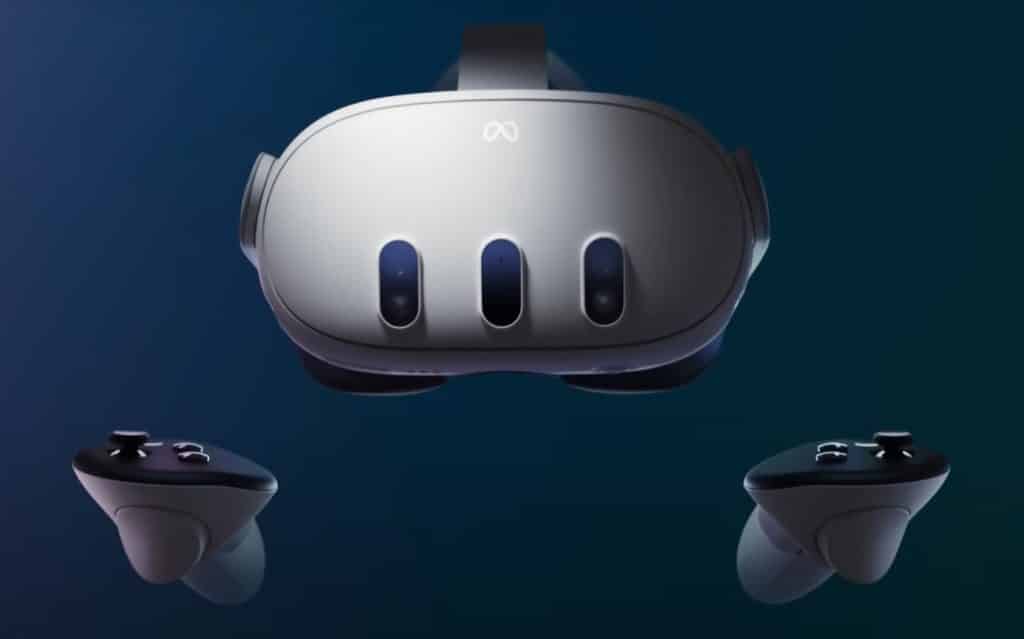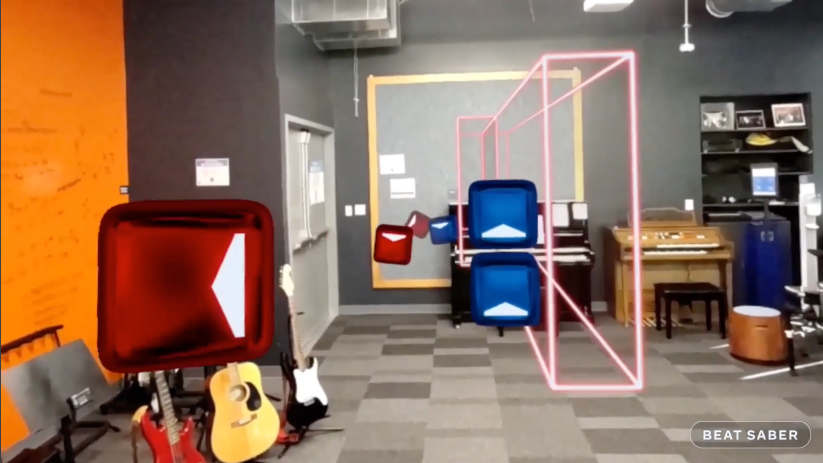The Meta Quest 3 brings a number of improvements over the Quest 2 and one of those things is full-color passthrough and a whole bunch of mixed reality features. In this guide, we’ll tell you everything you need to know about Meta Quest 3 mixed reality, including:
- Why it’s better than the Quest 2
- Key features you need to check out
- Virtual reality games that take advantage of the new mixed reality features
Mixed reality is the endgame for a lot of VR headset companies. Apple, Meta, and HTC are all focusing on a device that looks like a pair of glasses but allows you to view digital information and virtual content. The Quest 3 doesn’t have the form factor yet, but the software gives us hints to where they are going.
If you want to know any other details, let us know!
What is the Meta Quest 3
The Meta Quest 3 is the latest virtual reality (VR) headset from Meta, the company formerly known as Facebook. This next-generation device is set to redefine the VR landscape with its advanced features and capabilities.
The Quest 3 features better graphics performance, a next-gen Qualcomm Snapdragon processor, better cameras, and improved sensors.
All of these new features help to promote Meta Quest 3 mixed reality features and capabilities.

What is Mixed Reality?
Mixed reality (MR) is a blend of physical and digital worlds, where physical and digital objects co-exist and interact in real time. It’s a step beyond augmented reality (AR), which overlays digital content onto the physical world, but doesn’t allow for interaction between the two.
In contrast, MR allows users to interact with both physical and digital objects, creating a more immersive and interactive experience.
The Meta Quest 3 is at the forefront of this MR revolution, with features designed to seamlessly blend the physical and virtual worlds.

Meta Quest 3 Meta Reality Technology
The Quest 3 is the first headset to feature Meta’s groundbreaking Meta Reality technology. This technology allows the headset to intelligently understand and respond to objects in the physical space, blending the physical world with the virtual one.
The Meta Reality technology in the Quest 3 is powered by a next-generation Snapdragon chipset developed in collaboration with Qualcomm Technologies. This chipset delivers more than twice the graphical performance as the previous generation Snapdragon GPU in Quest 2, enabling the headset to create more detailed and realistic virtual environments.
In the Quest 2, you had to manually define your play space and area. With the Quest 3’s new depth sensor, the headset is able to build up your world around you automatically.

High-Fidelity Color Passthrough
One of the key features of the Quest 3’s Meta Reality technology is high-fidelity color Passthrough. This feature allows users to see the real world around them in full color through the headset, rather than in monochrome or low-resolution color as is the case with the Quest 2 and many other headsets.
High-fidelity color Passthrough is made possible by the Quest 3’s dual 4MP RGB color cameras and a depth sensor, which provide a more accurate representation of the user’s play space.
The Quest 3’s cameras have 10x more pixels in Passthrough compared to the Quest 2, resulting in a clearer and more detailed view of the real world.
The Quest 2’s cameras was only 1280 x 1024 pixels, lacking any real clarity. The Quest 3’s is 2560 x 1440 pixels, offering incredibly crisp details by comparison.
Here’s a comparison of the Quest 3 and Quest 2’s Passthrough capabilities:
Spatial Understanding and Machine Learning in Quest 3
The Meta Quest 3 takes mixed reality to the next level with its advanced spatial understanding and machine learning capabilities. These technologies allow the headset to intelligently understand and respond to objects and environments in the physical world. This should create a more immersive and interactive mixed reality experience.
Spatial understanding enables the Quest 3 to accurately map the user’s physical environment, recognizing objects and surfaces in the real world. This allows the headset to seamlessly blend virtual objects with the physical environment, creating a more realistic and immersive mixed reality experience.
Innovative machine learning allows the Quest 3 to learn from the user’s interactions and behaviors, improving the mixed reality experience over time.
For example, the headset can learn to recognize specific objects or gestures, allowing for more intuitive and natural interactions in the virtual world.
If Meta is going to release full mixed reality glasses in the future, the machine learning it gathers from the Quest 3 becomes very important.

Interacting with the Real and Virtual Worlds in the Meta Quest 3
One of the most exciting aspects of the Meta Quest 3’s mixed reality headset is the ability to interact with both the virtual and physical world simultaneously. This is made possible by the headset’s advanced Meta Reality technology, high-fidelity color Passthrough, and machine learning capabilities.
With the Quest 3, users can see and interact with virtual objects in their physical environment, creating a truly immersive mixed reality experience.
For example, users can pick up a virtual object with their physical hand, or interact with a virtual character in their real-world living room.
The Quest 3 also supports hand tracking out of the box, allowing users to interact with the virtual world using natural hand gestures. This adds another layer of immersion and interactivity to the mixed reality experience, making it more intuitive and engaging.
The Future of Meta Quest 3 Mixed Reality
The Meta Quest 3 is undoubtedly a game-changer in the world of virtual reality and mixed reality. It is the first mainstream headset under $500 to include these features.
Looking ahead, the Quest 3 could pave the way for even more advanced mixed reality experiences.
For example, we could see:
- more sophisticated interactions between the real and virtual worlds
- more realistic virtual environments
- more intuitive and natural user interfaces.
The Quest 3 could also drive the adoption of mixed reality in various industries, from gaming and entertainment to education and training. With its advanced capabilities and affordable price point, the Quest 3 could be the device that brings mixed reality to the mainstream.

Conclusion
The Meta Quest 3 virtual reality headset is a remarkable device for mixed reality. From its groundbreaking Meta Reality technology and high-fidelity color Passthrough to its spatial understanding and machine learning capabilities, the Quest 3 offers a truly immersive and interactive mixed reality experience.
Whether you’re a VR enthusiast or a newcomer to the world of virtual reality, the Meta Quest 3 is a device worth considering.
With its advanced features and affordable price point, the Quest 3 could be the device that brings mixed reality to the mainstream.
Stay tuned for more updates on the Meta Quest 3 and its exciting mixed reality capabilities!


